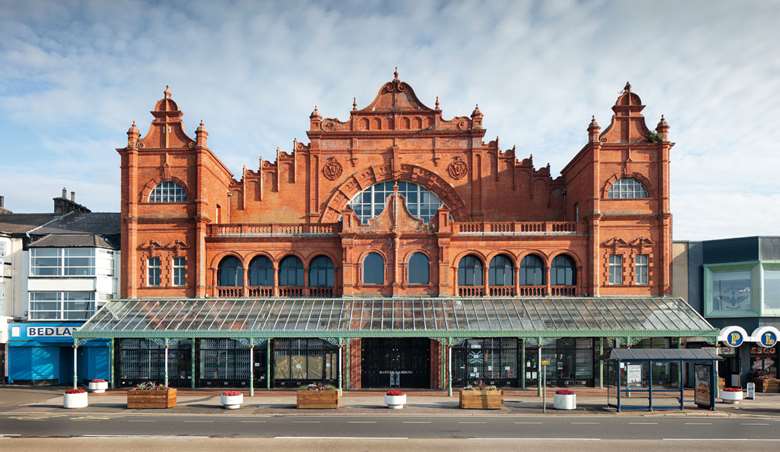Preserving history
Nick Smurthwaite
Sunday, March 1, 2020
Nick Smurthwaite meets Jon Morgan, director of the Theatres Trust to find out more about the charity's work

ALAN BULL
Since it was set up in 1976 the mission of the Theatres Trust has been to protect and promote Britain's theatre buildings, ensuring their survival and functionality.
So, whenever a regional or West End theatre requires planning permission to make improvements or alterations, the local authority will approach the Trust for its opinion. Last year they proffered an opinion on 142 planning submissions.
Working with the industry
‘What we're increasingly doing,’ says Jon Morgan, director of the Trust since 2017 ‘is encouraging theatres to talk to us much earlier in the process, before any plans are submitted to the local authority. We did that with Fairfield Halls, the Theatre Royal Drury Lane, the King's Theatre Edinburgh and the King's Head Islington.’
‘I want to shift the perception of the Trust from this hurdle that has to be jumped over at the end of the process to us being there at the start, offering help and advice.’
Morgan says he'd like to ditch the idea that the Theatres Trust is ‘a kind of National Trust for theatre buildings’ and put more emphasis on the idea of theatres making live performance accessible to as many people as possible.
It was the indifference of local authorities in the post-war period to the fate of their old theatres that led to the setting up of the Theatres Trust 44 years ago. Land values were high, new housing was a priority and poorly maintained Victorian and Edwardian theatres were considered a liability.
‘There was a general feeling in the 1950s and 60s that most theatres were crummy old buildings and it was about time we got rid of them,’ says theatre historian and former Trust director John Earl. ‘I personally saw two dozen old London theatres disappear, mostly from the suburbs, during the time I worked for the London County Council.’
Equity, the actors’ union, launched the Save London's Theatres Campaign in 1972 in response to a redevelopment plan to close or demolish 16 historic theatres in the Covent Garden area. Its supporters famously formed a human chain around the Shaftesbury Theatre to stop it being knocked down.
A private members’ bill, drafted by the Save London Theatres Campaign, introduced the Theatres Trust as a statutory body in 1976 ensuring that ‘current and future generations have access to good quality theatres that reflect our cultural life and offer inspiring places to enjoy theatre.’
Its income derives primarily from the rentals of the three West End theatres it owns. The freeholds were gifted to the Trust in the mid-1980s, providing it with a steady income ever since. Morgan says it is ‘a blessing because we can predict our income more confidently than people dependent on public money.’
Financial security enabled the Trust to take a more proactive role in saving theatres, and to become universally acknowledged as the go-to people for buildings at risk, whether it was a big West End theatre like the Dominion or the tiny Shanklin Theatre in the Isle of Wight. It also enables the Trust to award grants to theatres in need of emergency repair and improvement work.
Theatres at risk
Since 2006 the Trust has published annually its Theatres at Risk register, highlighting theatres across the UK that are under threat of closure, redevelopment or demolition. This year's register sees two venues removed from the list – Bradford Odeon and Peterborough New Theatre – with their futures secured, one as a music venue, the other producing live theatre courtesy of Selladoor.
The current register lists 30 UK venues under threat for a variety of reasons. At the recent launch event, Morgan called for more collaborative creative partnerships between local authorities, theatre owners, operators and community groups to protect all the endangered venues.
He said, ‘Since we started publishing the List in 2006 we've saved 80 theatres, including Wilton's Music Hall, Alexandra Palace, Tyne Theatre and Opera House, and the Brewhouse in Taunton. Generally speaking, we only put theatres on the list that have a good chance of remaining or being returned to being a community performance venue. We work alongside local pressure groups in organising viability studies and advising on fund-raising strategies. Without a viability study it is difficult to make a case.’
He sees the Trust as ‘a critical friend’ to the sector, advising and helping, as well as a conduit when it comes to putting a case to local or national governments, making sure they understand the benefits of investing in and protecting theatres across the UK.
The Trust is in close collaboration with Historic England, including working jointly on a safety report concerning suspended plaster ceilings, following the incidents at two London theatres – the Apollo in 2013 and the Piccadilly Theatre last year.
Morgan says, ‘Safety is obviously paramount to theatre owners, and I'm confident that our theatres are not unsafe. As a result of the Apollo ceiling collapse, we and the Association of British Theatre Technicians issued guidance saying that all theatre buildings had to be inspected. The Piccadilly wasn't the same thing because it was caused by a water leak.’

